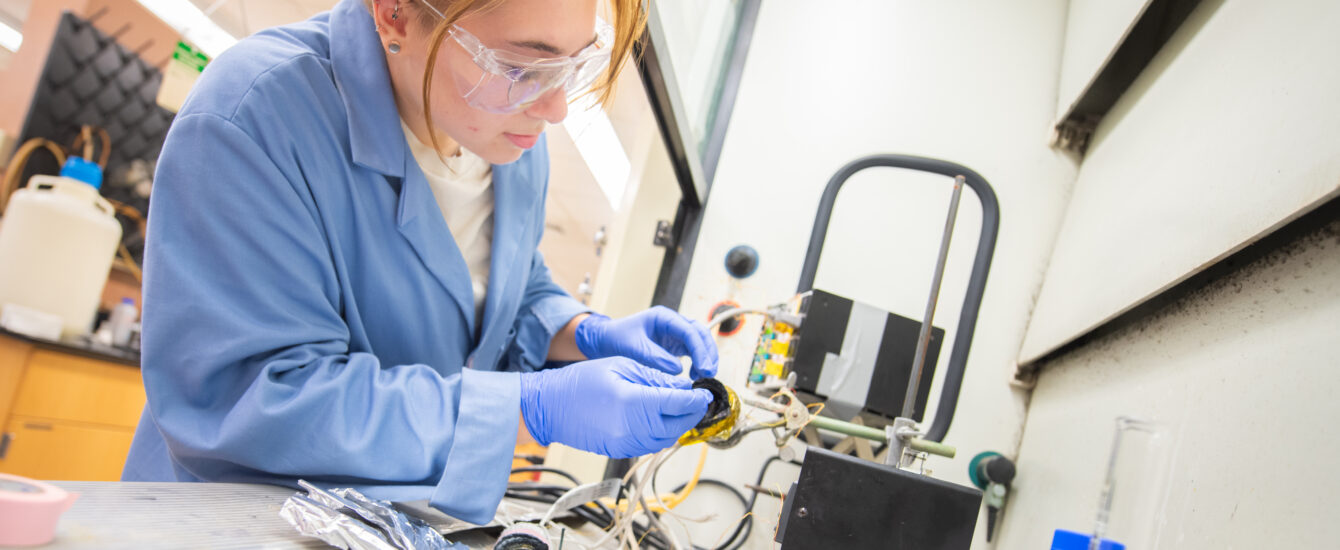
Fruit flies and fungus, molecules and mutations
For 76 Clarkies, summer was spent in the lab peering into microscopes, analyzing data, studying dung beetles, or mating fruit flies. Students in the STEM Summer Undergraduate Research Program worked with faculty to explore topics in chemistry, biochemistry, biology, physics, environmental science, and computer science. In addition to hands-on work in their labs, students attended workshops to discuss manuscript planning, upholding scientific integrity, and having a critical eye when reading scientific literature.
“The goal of this program is to build a community of undergraduate scientists on campus,” says Don Spratt, professor of chemistry and director of STEM summer undergraduate research opportunities, who organizes the annual program. “Having shared workshops and opportunities to learn from each other is the key to building a community of learners, which is what Clark is all about.”
Many students are continuing their research into the fall semester and will present new discoveries at ClarkFEST on Oct. 30.
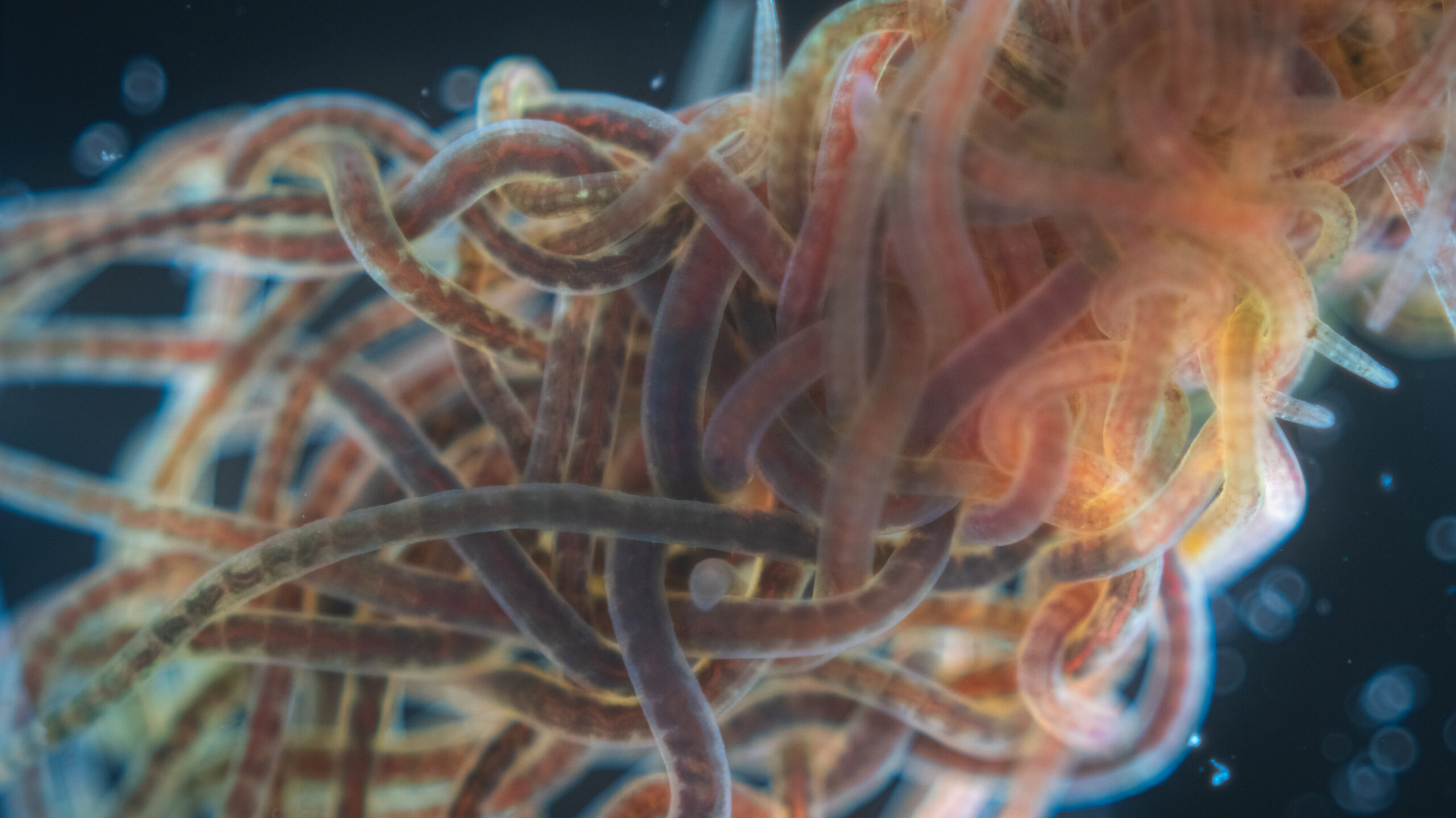
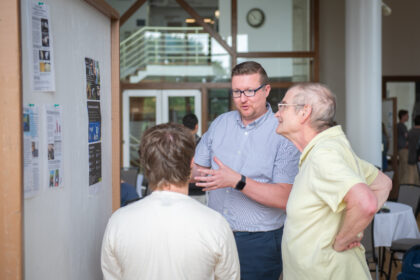
Zachary Kratz ’25, a computer science major, and Carlos Pérez-Gazca ’25, a biology major, have spent their summer observing the white rot fungus, typically found in wet areas like riverbeds or swamps in North America. Only one of the two morphologies of this fungus has spore dispersal gills exposed. In theory, without exposed gills for the spores to spread, the fungus should not be able to reproduce. But it does anyway. These students are researching what advantages this morphology brings to its environment. Pérez-Gazca and Katz are performing secotioid gene analysis on fungus samples from the Ipswich River in Massachusetts and the Chicago River in Illinois, as well as preserved samples from the Chicago Field Museum of Natural History, isolating the specimens’ DNA to obtain reproduction and population data. The two are advised by biology Professor David Hibbett.
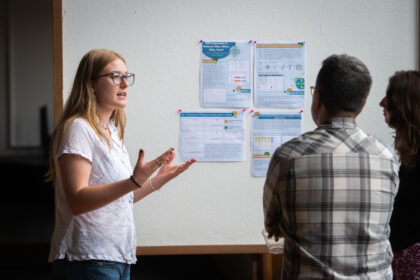 Gaia Lenox ’26 and Lauren Merrikin ’26, both biochemistry and molecular biology majors, wanted to discover what nitric oxide synthase (NOS), an enzyme in the body and common in mammals, signals to the cells and how it impacts stress response. Diatoms, a type of plankton, were the subject of their study. The two grew and harvested cells in the dark, hoping to understand if the chemical processes happening in the dark are reliant on NOS. Because nitric oxide is used for stress response for many cells, understanding that response could help advance research around climate change. Rising water temperatures, for example, can send diatoms into a stress response, and diatoms are important for carbon fixation (the process by which plants, algae, and bacteria convert carbon dioxide) in the ocean. Because carbon fixation is important for climate regulation, it would be beneficial to lower stress and help cells survive in conditions like high-water temperatures as the planet continues to warm. The students were advised by biology professor Deborah Robertson.
Gaia Lenox ’26 and Lauren Merrikin ’26, both biochemistry and molecular biology majors, wanted to discover what nitric oxide synthase (NOS), an enzyme in the body and common in mammals, signals to the cells and how it impacts stress response. Diatoms, a type of plankton, were the subject of their study. The two grew and harvested cells in the dark, hoping to understand if the chemical processes happening in the dark are reliant on NOS. Because nitric oxide is used for stress response for many cells, understanding that response could help advance research around climate change. Rising water temperatures, for example, can send diatoms into a stress response, and diatoms are important for carbon fixation (the process by which plants, algae, and bacteria convert carbon dioxide) in the ocean. Because carbon fixation is important for climate regulation, it would be beneficial to lower stress and help cells survive in conditions like high-water temperatures as the planet continues to warm. The students were advised by biology professor Deborah Robertson.
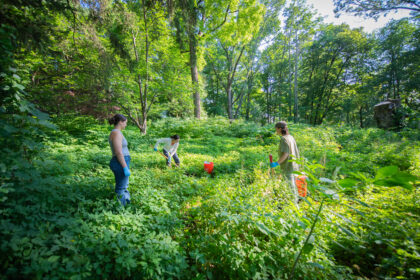
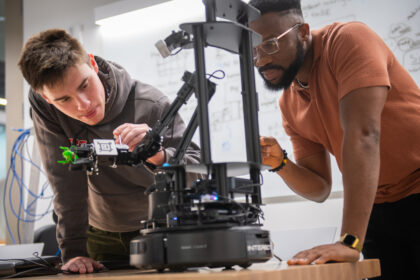
Ian MacCormack ’25, a biochemistry and molecular biology major, is researching the possibility of synthesizing a bifunctional molecule that will inhibit amyloid-beta aggregation (or plaques). Amyloid-beta plaques are formed in the brain and are a direct contributor to neuron death, which is commonly associated with Alzheimer’s disease. Another contributor to the onset of Alzheimer’s symptoms is the binding of copper ions to the amyloid beta plaques, causing an even steeper increase in neuron-inhibiting toxicity. MacCormack is working on developing a small molecule with two primary functions: one is to inhibit amyloid plaques from forming, and the other is to pull the copper away from the plaques to reduce the toxicity. MacCormack previously developed a similar molecule, but this new smaller size will make the molecule travel through cell membranes more efficiently. MacCormack hopes this can be adapted by other scientists and researchers to contribute to Alzheimer’s drug research. MacCormack is advised by chemistry Professor Arundhati Nag and research scientist Samir Das.
 Biology major Isabelle Speiser ’25 is researching two different mutations found on the wings of the common fruit fly. The mutations present themselves as a shortened posterior cross vein on the wing and possess the same gene found at high levels in humans with leukemia or lymphoma. Speiser seeks to determine how these mutations appear, as the causes of that mutated gene in the flies may provide useful information for human cancer drug research. Her experiment involved mating flies and searching the offspring for the mutated fly line. The experiment showed no mutation in offspring, suggesting that the mutation must derive from a different mechanism. Speiser, who was advised by Professor Justin Thackeray, hopes that these and future findings can contribute to cancer drug research.
Biology major Isabelle Speiser ’25 is researching two different mutations found on the wings of the common fruit fly. The mutations present themselves as a shortened posterior cross vein on the wing and possess the same gene found at high levels in humans with leukemia or lymphoma. Speiser seeks to determine how these mutations appear, as the causes of that mutated gene in the flies may provide useful information for human cancer drug research. Her experiment involved mating flies and searching the offspring for the mutated fly line. The experiment showed no mutation in offspring, suggesting that the mutation must derive from a different mechanism. Speiser, who was advised by Professor Justin Thackeray, hopes that these and future findings can contribute to cancer drug research.
The Thackery lab also hosted fruit fly research by biochemistry and molecular biology majors Lily Vincent ’27 and Nicole Steele ’27. The pair studied a protein called PLC-gamma within a construct called X10. They inserted X10 in their flies as much as possible and crossed them with other flies until they could generate permanent lines of flies with X10 inserted on the X chromosome. Moving forward, they plan to use the X10-insertion fly lines to perform chemical drug screenings. They want to inhibit the overexpression of PLC-gamma, which is common in human tumors. This work could benefit potential cancer drugs in the future.
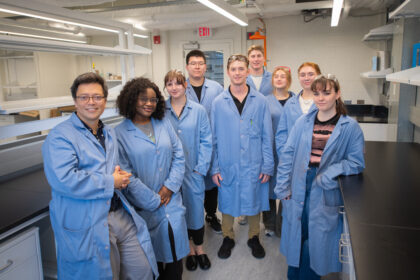
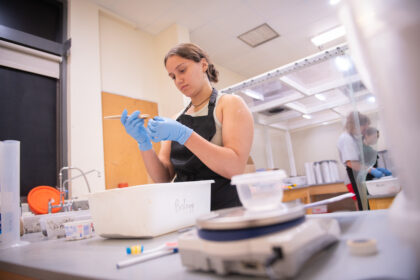
 Jackie Wallis ’26, an environmental science and conservation biology major, has been studying cyanobacteria across 20 to 25 ponds and lakes in Worcester under the advisement of biology Professor Nathan Ahlgren. While these bacteria are naturally occurring, pollution can exacerbate their invasive qualities. Cyanobacteria can form large blooms that can be harmful to local wildlife and other organisms. Wallis has been measuring and quantifying this bacterium to further understand what may cause the blooms. Every month Wallis is sent water samples to filter and extract DNA. Once all the DNA is collected, it is sent off for sequencing, so Wallis can uncover factors that may influence bacterial growth. These factors could include how much rain the city has been getting, how polluted the specific areas are, the size of the body of water, and the water temperature. Wallis hopes to present these findings to the Worcester Lakes and Ponds program at the end of October.
Jackie Wallis ’26, an environmental science and conservation biology major, has been studying cyanobacteria across 20 to 25 ponds and lakes in Worcester under the advisement of biology Professor Nathan Ahlgren. While these bacteria are naturally occurring, pollution can exacerbate their invasive qualities. Cyanobacteria can form large blooms that can be harmful to local wildlife and other organisms. Wallis has been measuring and quantifying this bacterium to further understand what may cause the blooms. Every month Wallis is sent water samples to filter and extract DNA. Once all the DNA is collected, it is sent off for sequencing, so Wallis can uncover factors that may influence bacterial growth. These factors could include how much rain the city has been getting, how polluted the specific areas are, the size of the body of water, and the water temperature. Wallis hopes to present these findings to the Worcester Lakes and Ponds program at the end of October.
Chemistry major Vinicius Bittencourt ’27 spent the summer synthesizing cuprous oxide using different morphologies in a catalytic reaction, something that could be useful for future environmental research. Catalysts are important chemical reactions, and Bittencourt worked with different morphologies, or shapes, of cuprous oxide to observe reaction times and determine which shape is associated with better reactivity. Bittencourt, who studied with chemistry Professor Luis Smith, had 30 samples in the lab of varying combinations. He found that the hexapod shape was a better catalytic performer because of its small diameter. This work is important because catalysts can be used in various reactions, for example, helping to degrade toxic chemicals in waterways or the atmosphere or to store energy for solar panels.

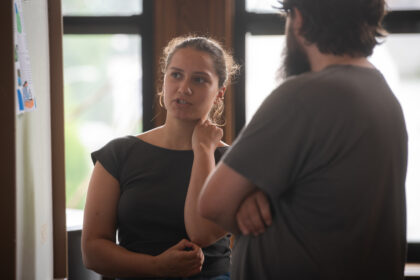
Photos: Steven King, director of photography / university photographer


